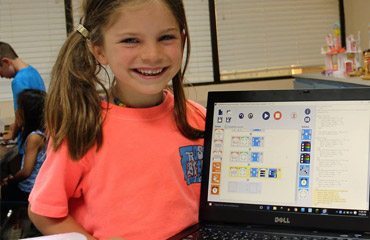Students develop basic computer programming skills by coding for the Thymio robot using drag-and-drop tools.
Students learn the technical process of connecting and uploading computer code to the Thymio robot. Students explore the electronics sensors which Thymio uses to detect touch, motion, sound, and the physical proximity of nearby objects, as well as the behavioral commands available to control Thymio’s LED lights, activate its motors, and generate sound. Using the Aseba Studio’s Visual Programming Language, students write computer code based upon simple If/Then logic to precisely control Thymio’s behavior. Students apply logic, design, and coding skills by executing their first independent project–turning Thymio into a robotic animal with unique personality and behaviors.



